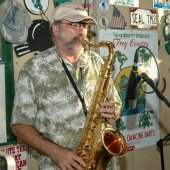-
Posts
7,000 -
Joined
-
Last visited
-
Days Won
6
Everything posted by Notes_Norton
-
In catholic schools we the most contact with the nuns. Priests at confession, mass and an occasional speech in front of the class. Thankfully I wasn't an altar boy as they are the sad ones that are victims of abuse. Not that abuse is rampant, but it wasn't controlled well by the Vacant. At the first complaint or suspicion a full investigation and if necessary correction should be administered. I'm sure most of the priests were good men. But the nuns--that's another story. Frustrated old witches that hated children. Oh the first two grades were fine, with sweet nuns, but by the 3rd it was that school's philosophy to break the spirit of the children. And I went before corporal punishment over the teacher's desk in front of the class was considered abusive. I wasn't a particularly bad kid, but I wasn't an angel either. Discipline with yelling and a yardstick, all punishment and no rewards is not the best way to bring up children IMHO. Like a puppy, you need to encourage children to do what you want them to do as much as possible, and save the negative discipline for when it's really needed. In the 6th grade I moved to Florida, got into public school and I no longer hated school.
-
Tired Of Waiting For You - The Kinks
-
Definitely NOT. I disliked almost everything about Catholic school, including the priests and the nuns.
-
That's what the Priest in Catholic school said anyway.
-
Ramones - I Wanna Be Sedated Because it's a fun song
-
When I was in a road band opening for headliners with Marshall amps and Voice Of The Theater PA speakers, it was too loud, but I was too young and too dumb to care. Fortunately I learned about ear plugs when the damage was still classified as very mild. Big thanks goes out to the more experienced musician who warned me.
-
"Waiting For Waits" - Richie Cole A song by saxophonist Richie Cole and vocalist Eddie Jefferson that is a tribute to the great singer/pianist Tom Waits
-
Originally an Otis Redding Song. Then Aretha came along with the help of King Curtis who was playing sax and leading the band and IMHO made the cover better than the original. But Otis still needs respect for writing it and singing it first. Aretha might have played piano on that cut, she often did and was a fine pianist. She doesn't get enough respect for her piano skills. For those like myself who know the song well, the "Sock it to him" part was the kicker. I never read Pearls Before Swine until I rented a movie from Netflix about cartoonists. In the Stephen Pastis interview I decided I liked the cartoonist and started reading it. They aren't all funny (nobody score run every time at bat) but some of them are great. A smile is a good way to start the day. Notes
-
I've never polished sausage. Though I've polished off more than a few.
-
Addadicktome.
-
When I was a child, I walked into a record store and asked the owner if he could recommend a saxophone record. I was in beginning band at school and didn't know any famous sax players yet. The clerk sent me home with this one. The music was a bit over my head at the time, but I grew to love it. I wore out two vinyl LPs and finally got it in CD. The orchestra was written and arranged, the sax and drum parts are completely improvised. It's not jazz, it's not classical, it's not pop, it's not like anything Stan Getz did before or after, it's in a class by itself, and the sax improvisations are superb. Focus - Stan Getz (entire album)
-
Satin Doll - Duke Ellington & Billy Strayhorn with lyrics by Johnny Mercer - Ella Fitzgerald singing Not my very favorite version but it's one of the most famous
-
Undun - The Guess Who Burton Cummings sang lead and played the excellent flute solo. Randy Bachman's guitar comping behind the vocals is utterly fantastic IMHO. I wish I could do that!!! (although I play guitar, my primary instruments are saxophone and windsynth)
-
Not Peterbilt?
-
When I was a little child and I heard Bei Mir Bist Du Shein played on mom's radio, I thought the Andrews Sisters were singing My Dear Mister Shane. Looks like I wasn't the only one: Bei Mir Bist Du Shein "My Dear Mr.Shane" by The Satin Dollz And the Andrews Sisters (who although they sang corny music by today's standards, they did it very, very well).
-
Nice outfits
-
"Heat Wave" - Martha and the Vandellas
-
I'm rather new here, and I immediately found a home. Helpful people with a sense of humor and a sense of community. Notes
-
Dvořák - Symphony n°7 - Cleveland Orchestra, George Szell
-
How does one follow that???? I Want Your $EX - George Michael
-
I hope you have your laptop camera covered up. I use a band-aid
-
"Dirty Laundry" - Don Henley
-
The Arabian Nights, complete Ballet in two Acts - Fikret Amirov Actually I'm listening to this on my CD player, while I do some bookkeeping for my Norton Music Band-in-a-Box business. it's and incredible piece of music.




